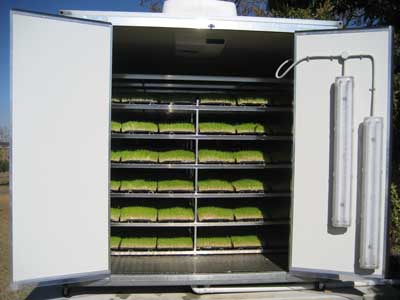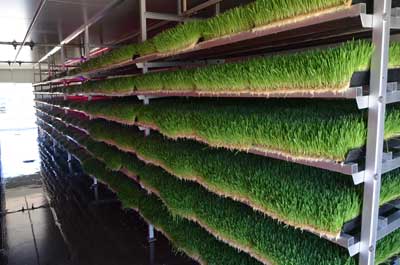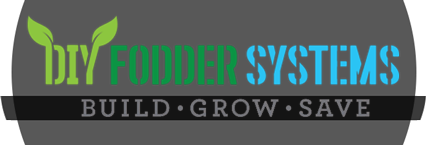Hydroponic fodder production involves supplying cereal grains and other seeds with necessary moisture and nutrients, to enable germination and plant growth in the absence of a solid growing medium.
The resulting green shoots and root mat are harvested and fed to livestock.
The grain responds to the supply of moisture and nutrients by germinating, sprouting and then producing a 200 – 250mm long vegetative green shoot with interwoven roots within 5 days
Growing animal feedstock hydroponically is a relatively new trend even though the process has been around since the 1930s.
The earliest known patent on the process was in 1912 for the sprouting of seeds for racing pigeons.
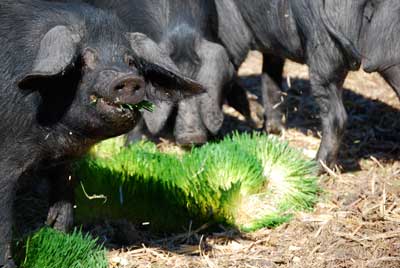
FODDER
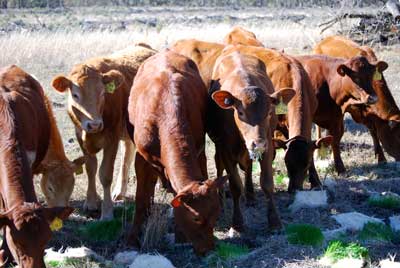
Fodder in the form of sprouted grains and legumes can be grown in small and large quantities.
Systems have been developed recently that allow for many tons of sprouts to be produced each day, year round.
Sprouted grains can greatly increase the nutritional value of the grain compared with feeding the ungerminated grain to stock.
In addition, they use less water than traditional forage, making them ideal for drought conditions.
Sprouted barley and other cereal grains can be grown hydroponically in a carefully controlled environment.
Under hydroponic conditions, sprouted fodder at 150 mm tall with a 50 mm root mat is at its peak for animal feed.
Although products such are barley are grain, when sprouted they are approved by the American Grass-fed Association to be used as livestock feed.
Do I need an expensive factory built system?
The best part is that you don’t need one of the expensive factory built systems.
You can build your own for a fraction of the cost.
When my team and I started growing fodder commercially over 15 years ago, it was a daunting process.
There were so many variables to get right. Such as:
The growing environment:
- to hot and toxic moulds flourish.
- To cold and it doesn’t grow.
The variety of seeds:
- Some had a low germination rate and some had mould spores.
The seeding rate:
- We under seeded; this resulted in a large surface area for a small yield.
- Then we increased the seeding rate and we experienced thermal runaway.
The temperature exceeds exponentially every hour and compounds:
- This also results in anaerobic conditions. Causing toxic moulds and toxic bacteria.
The growing tray design:
- Growing tray sounds simple enough, until you are harvesting several tons per day and the incorrect tray ads hours of time to what should be a simple task.
The racking angle.
- To flat, and the water pools and becomes anaerobic.
- To steep and the water runs way and the seeds dry out.
- Or the seeds can wash off the trays as well.
Airflow.
- To little and again anaerobic conditions form.
- Too much and it is wasted energy and input costs and the seeds dry out.
That animals receive a consistent feedstock that has no pesticides or herbicides, is of high quality, and uses very little water.
The most common sprouting crop is barley, although wheat, corn, peas, oats, sorghum, and wheat are possible grains to grow fodder.
Typically, the seed is spread in a tray and kept moist.
In a 24 hrs it will sprout and in 5 days it will become 12 – 15cm tall depending on the seed used.
The mat of roots, and green foliage is fed in its entirety to the animals.
The advantages of growing fodder this way is that there are no big land requirements and you can always feed fresh grass with minimal water usage.
The main advantage is if Hydroponically gown fodder is grown correctly and fed correctly you will increase your profitability.$$$$$$$
The best part is that you don’t need one of the expensive factory built systems.
You can build your own for a fraction of the cost.
